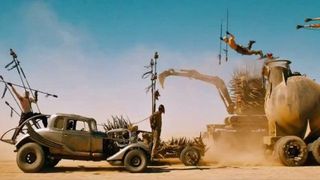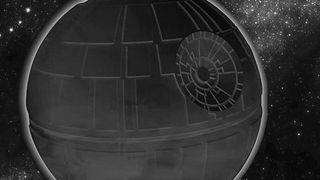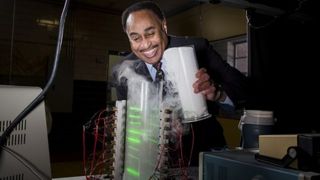Best of techradar 2015: our articles of the year
We pick our personal highlights of the past year
This is what riding in Mercedes' self-driving car looks (and feels) like
By Michelle Fitzsimmons, March 19

"Of course, while you're occupied doing anything but driving, the F 015 is hurtling through space. I had one 'oh crap moment as the F 015 accelerated on its own, no driver at the helm to brake if necessary. Even more disconcerting: there wasn't anyone looking out the front windshield to see where we were going. The driver can manually take over the F 015 at any time, but still, you have to trust it's not going to drive you straight into the San Francisco Bay.
Any passenger can technically become the driver - or 'conductor,' as Mercedes refers to whoever is controlling the car - accelerating or decelerating the F 015 by touching the door displays. This particular software wasn't working properly during my test drive, unfortunately. I wanted to give my fellow passengers a scare."
More picks by Michelle
- Why Google becoming Alphabet is a really big deal
- Microsoft made either the best or worst website ever
From drones to iPhones: how George Miller recreated the mad world of Mad Max
By Marc Chacksfield, October 2

"The release of Mad Max: Fury Road earlier this year pushed George Miller's name right up to the top of the action director pile. The movie, a quasi-sequel to Miller's Mad Max trilogy, is the most refreshing piece of action cinema in years.
The reason: all the sequences were shot in-camera, not in front of a green screen - something that made complete sense to the director.
'We didn't use CG because we don't defy the laws of gravity [in the movie],' says Miller. 'There's no flying people or space vehicles, no alien planets. This is a real world, it's crazy to do it CG when you can do it for real. You want the world to be authentic, to be immersive.'"
More picks by Marc
Get daily insight, inspiration and deals in your inbox
Get the hottest deals available in your inbox plus news, reviews, opinion, analysis and more from the TechRadar team.
- Amazon: the best streaming service is one you've already got
- Sonos of anarchy: how Rage Against The Machine helped Sonos create its latest smart speaker
- Framestore: the future of filmmaking is digital humans
Epson PictureMate PM-400 review
By Juan Martinez

"I was never much of a photo-taker. Most of the snaps I took were of important moments with family and friends, or vacation landscapes that I wanted to remember later. I usually just fired off a few pics, loaded them onto Facebook and returned to them from time to time, to reminisce.
There was no real effort, no attention to detail and I didn't really think anything should happen to these images outside of their digital existence.
That all changed this past March when my wife and I had our first child - a baby girl we named Mila. Mila's birth didn't turn me into a shutterbug. I still use the automatic setting on my DSLR, and I can't tell you the difference between my aperture and ISO settings."
More picks by Juan
- Acer Chromebook 15 C910 review
- Lenovo LaVie Z review
- 9 Office 2016 features you'll love
- Dell XPS 13 (2015) review
- 9 things you might not know about the Microsoft Surface Hub
Yes, we can build a Death Star - and here's how
By Duncan Greene

"Close your eyes for a moment and imagine you're the head of North Korea's space program. It's Friday afternoon, you've had a tough week, and you're just sending a last few emails before you go home when a message drops into your inbox from Kim Jong-Un. Uh-oh, better answer this. The subject line is just two words. 'Death Star'.
Turns out he's been watching some of his dad's old movies, and one of them featured a huge planet-sized space station - he wants to know if it's possible to build it. A giant megastructure floating in space that's also capable of firing planet-destroying lasers - what could be simpler? You look at the plans. You look at the email reply window. You can't say 'no.' You know what a 'no' would mean for you and your family."
This man is closer than ever to building the world's first time machine
By Hugh Langley, November 2

"It was a personal tragedy that started the timeline. After Boyd Mallett died of a sudden heart attack in 1955, his 10 year old son, Ronald, made a promise: he would find a way to travel back in time to warn his father of what was going to happen. It was a mission inspired partly by a copy of H.G. Wells' The Time Machine, which Ron discovered a year after his father's passing.
The story follows the narrator's journey into the future, but one line in particular struck Ron: 'Scientific people know very well that time is just a kind of space and we can move forward and backward in time just as we can in space.' He believed that he could build a fully working time machine to go back in time and so he dedicated his future to proving it."
More picks by Hugh
- Why GTA 5 on PC took so long to get here - and why it was worth the wait
- MegaBots wants you to buy its robot a chainsaw so it can kick Japan's butt
- The UK is reclaiming its video game identity, but we need to do more
- This is what the PS4 and Xbox One should really be afraid of
- How hard is it to create yourself in Fallout 4?
Michelle was previously a news editor at TechRadar, leading consumer tech news and reviews. Michelle is now a Content Strategist at Facebook. A versatile, highly effective content writer and skilled editor with a keen eye for detail, Michelle is a collaborative problem solver and covered everything from smartwatches and microprocessors to VR and self-driving cars.

